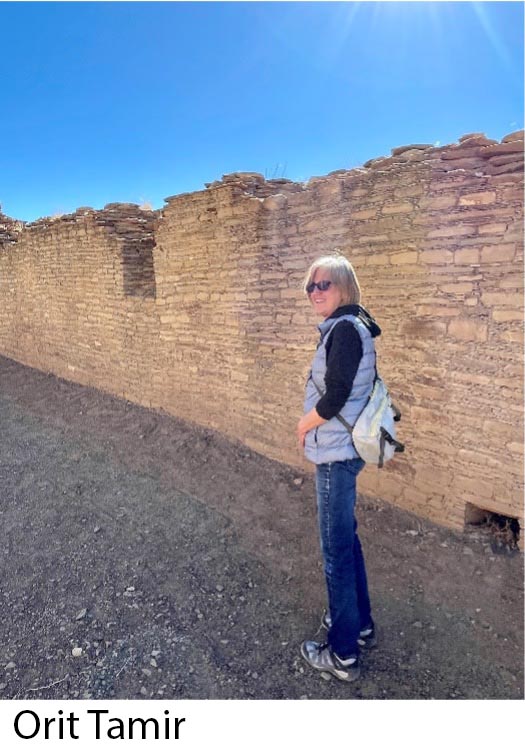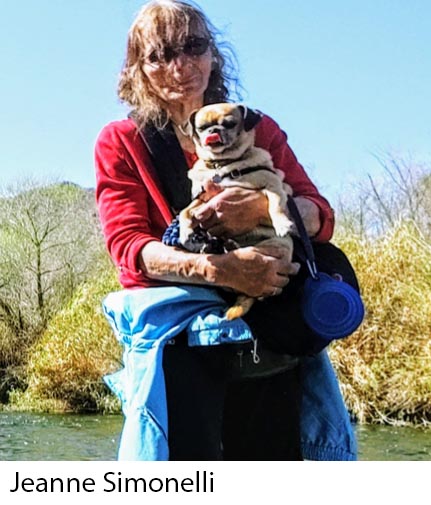An account is required to join the Society, renew annual memberships online, register for the Annual Meeting, and access the journals Practicing Anthropology and Human Organization
- Hello Guest!|Log In | Register
From the Editors
A Year with COVID-19, and Counting – From the Editors
Orit Tamir
Jeanne Simonelli
 I live in beautiful Santa Fe and teach at New Mexico Highlands University, a regional comprehensive university where the majority of students are ethnic minorities. During the initial Corona virus breakout in March 2020, I was on Sabbatical. Needless to say, my Sabbatical was disrupted by the spread of the coronavirus and the lockdown that followed. But the disruption was far greater for all the students, faculty, staff, and administrators when all in-person classes had to shift to online-only instruction during Spring Break. As weeks of online instructions turned into months, the realities of remote teaching, research disruptions, childcare obligations, and workplace at home were taking their toll on faculty, students, staff, and administrators. Many experienced varying degrees of stress, anxiety, and burnout. A year later, distance course delivery with few in-person instruction (with social distancing and face covering) is still the norm at my university. Our move to distance education initially raised concerns about the quality of distance educational instructions. We have done better than many similar universities however, in terms of both quality instructions and enrollment. Our of success is due, in part, to diligent negotiations between the Faculty Association and the administration, and to the dedication and flexibility of faculty, staff, and administrators to our students and their needs. Still, like in other universities around the country, some students had difficulties accessing effective computers and reliable high-speed internet; some struggled with distance learning while others strived; some of my colleagues struggled with online modalities, others flourished; and, we all got familiar with Zoom with all its pros and cons. It has been a tiresome year for everyone. Those of us in academia are looking forward to commencement (virtual at my university) and toward the summer break that follows. Still, I cannot help thinking about what will the next academic year, and beyond, be like. Will we be safely able to return to ‘normal’ in-person instructions? Should college students get priority for COVID-19 vaccination? Should universities require proof of COVID-!9 vaccination? Should colleges and universities rely on a campaign to get vaccines in the arms of faculty, students, and staff? What are the short- and long-term impacts of the pandemic on instructions, enrollment, research, higher education, and culture in general? I am looking forward, with some degree of unease, to a new normal and to seeing all of you in next year’s SfAA Annual Meeting in Salt Lake City.
I live in beautiful Santa Fe and teach at New Mexico Highlands University, a regional comprehensive university where the majority of students are ethnic minorities. During the initial Corona virus breakout in March 2020, I was on Sabbatical. Needless to say, my Sabbatical was disrupted by the spread of the coronavirus and the lockdown that followed. But the disruption was far greater for all the students, faculty, staff, and administrators when all in-person classes had to shift to online-only instruction during Spring Break. As weeks of online instructions turned into months, the realities of remote teaching, research disruptions, childcare obligations, and workplace at home were taking their toll on faculty, students, staff, and administrators. Many experienced varying degrees of stress, anxiety, and burnout. A year later, distance course delivery with few in-person instruction (with social distancing and face covering) is still the norm at my university. Our move to distance education initially raised concerns about the quality of distance educational instructions. We have done better than many similar universities however, in terms of both quality instructions and enrollment. Our of success is due, in part, to diligent negotiations between the Faculty Association and the administration, and to the dedication and flexibility of faculty, staff, and administrators to our students and their needs. Still, like in other universities around the country, some students had difficulties accessing effective computers and reliable high-speed internet; some struggled with distance learning while others strived; some of my colleagues struggled with online modalities, others flourished; and, we all got familiar with Zoom with all its pros and cons. It has been a tiresome year for everyone. Those of us in academia are looking forward to commencement (virtual at my university) and toward the summer break that follows. Still, I cannot help thinking about what will the next academic year, and beyond, be like. Will we be safely able to return to ‘normal’ in-person instructions? Should college students get priority for COVID-19 vaccination? Should universities require proof of COVID-!9 vaccination? Should colleges and universities rely on a campaign to get vaccines in the arms of faculty, students, and staff? What are the short- and long-term impacts of the pandemic on instructions, enrollment, research, higher education, and culture in general? I am looking forward, with some degree of unease, to a new normal and to seeing all of you in next year’s SfAA Annual Meeting in Salt Lake City.
 For those who have not spent the year teaching, many of Orit’s questions remain the same. I’ve just returned to my Park Service job at Pipe Spring National Monument. This year is shaping up to be one of the busiest years in Park Service history. After all, it has to be safe to be outdoors, right? Though all Arizona COVID-19 restrictions have been lifted, the federal mask mandate keeps staff covered all day. The buildings have opened, and you must be masked to enter. But outdoors is a different story. You cannot ask for proof of vaccination, nor would anyone be required to show it. In fact, counterfeit cards are being distributed at farmer’s markets in Southern Utah. Indeed, we must ask, as Orit did, what are the short- and long-term impacts of the pandemic on culture in general? Those who work in public health and other applied medical fields must be feeling burned out. This summer leaves us all wondering how we will deal with the PTSD from this year.
For those who have not spent the year teaching, many of Orit’s questions remain the same. I’ve just returned to my Park Service job at Pipe Spring National Monument. This year is shaping up to be one of the busiest years in Park Service history. After all, it has to be safe to be outdoors, right? Though all Arizona COVID-19 restrictions have been lifted, the federal mask mandate keeps staff covered all day. The buildings have opened, and you must be masked to enter. But outdoors is a different story. You cannot ask for proof of vaccination, nor would anyone be required to show it. In fact, counterfeit cards are being distributed at farmer’s markets in Southern Utah. Indeed, we must ask, as Orit did, what are the short- and long-term impacts of the pandemic on culture in general? Those who work in public health and other applied medical fields must be feeling burned out. This summer leaves us all wondering how we will deal with the PTSD from this year.

Cart
Search